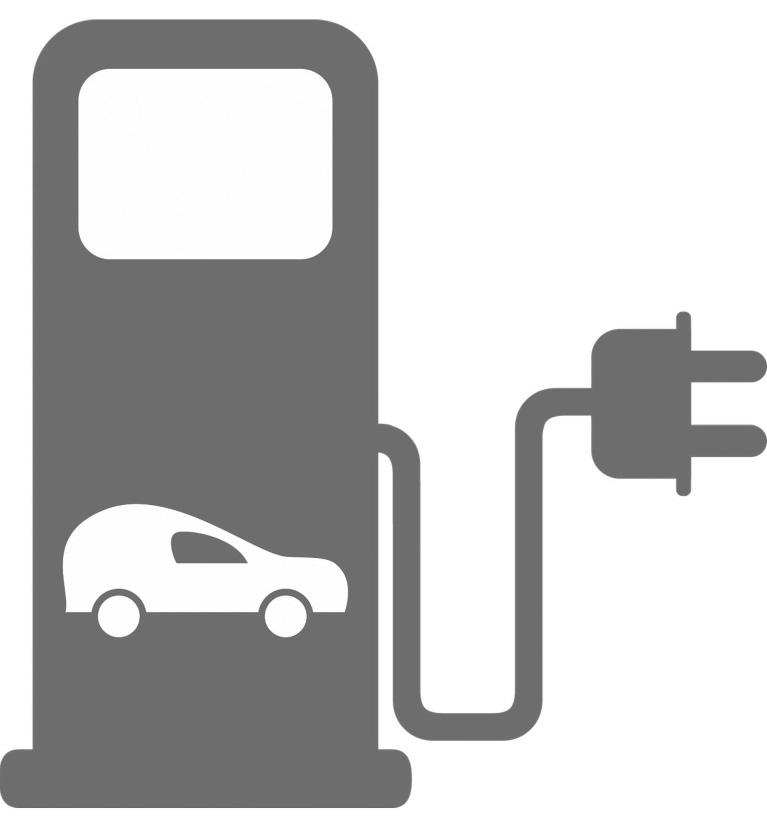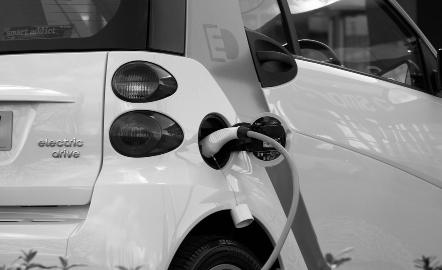
18 minute read
Electric Cars
by The Voyager
By LAURA SILENZIO ‘23 Opinion Editor
Year after year, we face the same threat and yet year after year the problem isn’t “urgent enough” to make real change. Three of the world’s most urgent environmental crises—climate change, rapid deforestation, and mass species extinction—are all interconnected problems that compound each other and their impacts on the planet. Anthropogenic sources, our man-made pollution caused by humans, is a huge factor in this. According to the Global Footprint Network, we currently consume more resources per year than our planet can produce in the same timeframe. What does this mean? We have to change the way we live in our daily lives in order to provide our future generations with a safe and thriving world, unlike the generations before us. Human Impact On Climate Change Humans—more specifically, the greenhouse gas (GHG) emissions that human activity generates—are the leading cause of the earth’s rapidly changing climate today. The burning of fossil fuels like coal, oil, and gas for electricity, heat, and transportation is the primary source of human-generated emissions. Companies like Exxonmobil and Chevron corporation in the United States alone do not care to change, denying or downplaying the effects of climate change, so it’s up to us, the people, to contribute our part to the healing of the planet. It Starts At Home The easiest thing for every person to adopt into their home is a reduction of single-use plastics policy. Simply avoiding things like plastic utensils, grocery bags, take-out boxes, water bottles, plastic straws, and styrofoam products can drastically change your CO2 output. Replace all of these things with the reusable version. There are plenty of reusable straw and shopping bag options. Once you do it consistently, you won’t even know the difference. Add Energy-Saving Features to Your Home. Explore green design features for your building, like passive solar heating, a rainwater catchment or greywater recycling system, and recycled materials. Installing a rainwater tank alone would capture rain and conserve water and allow you to use it to water your garden, wash your clothes, and even flush your toilet. Use biodegradable, non-toxic cleaning products—for not only the environment, but your health too. It has polluted drinking water, increased air pollution, and has also been attributed to the acidification of the soil and mineral depletion of the soil. Pesticides have been reported to cause several adverse health effects ranging from mild allergies, rashes, breathing difficulties, neurotoxicity and reproductive abnormalities to deadly chronic diseases like cancer. Create your own garden, mulch garden beds, specifically, choose more native plant species like butterfly weed, wood anemone, and Great blue lobelias as they’re both more likely to thrive and also provide a habitat for native animal species. Not only will you be helping the environment but your lawn will look dazzling and you’ll attract butterflies, pollinators, and hummingbirds. Changing Your Habits Eat less red meat/eat low on the food chain. Meat consumption is responsible for releasing greenhouse gases such as methane, CO2, and nitrous oxide. Livestock farming contributes to these greenhouse gases in several ways, most prominently the destruction of forest ecosystems (half of global greenhouse-gas emissions are caused by animal agriculture). I would even go as far as to consider becoming a vegetarian, or at the very least fit a “No Meat Monday” into your week. You also have the option to compost your food waste (turn it into an organic fertilizer that your aforementioned plants will love). Adding Composting into your daily lifestyle prevents soil erosion, promotes healthier plant growth, conserves water, reduces waste, combats climate change, and improves overall soil health. Reduce your water use. This is a huge one. Simply turning off your sink in between uses and limiting your shower time to less than 10 minutes will go a long way. Installing a water efficient shower head is also a big help. Lessening your water usage diverts less water from our rivers, bays, and estuaries, which helps keep the environment healthy. Invest in sustainable fashion companies. Buying vintage or recycled clothing and purchasing items with recycled content reduces carbon emissions and saves lots of resources, water, and energy. They also prevent old clothing from ending up in landfills or incinerators. Buying secondhand clothing is great for the environment and your wallet. Use more fuel efficient cars. Fuel efficient vehicles require less gas to go a given distance. When we burn less gas, we cut global warming emissions and produce less pollution, while spending less on gas—a lot less. When less gasoline is burned, less carbon dioxide ends up in the atmosphere. All of these things are adaptable with enough effort. Taking a Bigger Step Purchase carbon offsets. Carbon offsets are a practical and effective way to address climate change and encourage the growth of renewable energy. When someone buys a carbon offset, the money goes to pay for a reduction in greenhouse gases that has already occurred. This purchase supports an existing project. Using them, you can counteract the personal greenhouse gas emissions that you cannot avoid causing —your “carbon footprint” —while contributing to a more sustainable future. Get politically active Government research and development programs, such as the Advanced Research Project Agency-Energy, can drive progress in clean energy technologies and bring them to commercial use. Congress is responsible for authorizing laws to address the climate challenge and appropriating funding for relevant programs. With your help, you can be a part of the effort to curb emissions and protect public health by urging Congress to enact new legislation.
Advertisement
Earth Day might only be one day, but your efforts to conserve the environment are long-lasting. Photo from Wikimedia Commons
Electric cars are important for environmental conservation
By ANNA LANGAN ‘22 Staff Reporter
While we may not be surrounded by flying cars, spaceships, and all of the inventions imagined for the future, one major change has emerged within society, and it has become incredibly common within daily life. With many technological developments and improvements in the last decades, the emergence of electric cars has begun. Electric cars are not only becoming more common, but they are becoming the future of roadways. Many car manufacturers are releasing electric and hybrid vehicles to bridge the gap into the future of their companies. Meanwhile, other companies are vowing to be completely electric or carbon neutral by 2050. While companies have complete freedom of their individual creations, the car market as a whole is becoming increasingly green with rising concerns for global warming and developing environmental standards. Electric cars have been in development since roughly the 1890s, but only in recent years has this become a viable option for the public. Now more than ever, with rising gas prices, growing global warming, and new and developing regulations worldwide regarding emissions and sustainability, the need for electric vehicles has become increasingly apparent. Luckily, both traditional motor companies and new corporations founded solely for the purpose of electric vehicles have made this a more obtainable task. Everything from electric supercars to electric work trucks are being developed for citizens to drive a piece of the future. As of now, electric vehicles are categorized through five main forms. Electric vehicles, or “EVs” are the general term for an electronic vehicle that obtains power from motors and batteries that are charged with electricity. “BEVs” or battery-powered electric vehicles, are completely electric, meaning they use no gas and have no tailpipe or emissions. “HEVs,” or hybrid electric vehicles, are the most commonly produced electric vehicles now. They use their batteries which can be charged from the car’s braking and energy to propel the engine. Beyond the battery power, the car can still rely on gasoline but there is a significantly less amount that’s necessary, making it cheaper and more reliable for the driver. Plug-in hybrid vehicles, or “PHEVs” can be plugged into outlets to allow their batteries to charge, and beyond this they can use petroleum fuel to drive. Essentially they are reliant on a combination of traditional gasoline and these newly developed electric sources. The final and least common non-gas vehicle is the “FCEV,” which is not available outside of California. These fuel cell electric vehicles run on gasses such as compressed hydrogen. They can be filled at stations but this makes it difficult for them to become common due to the difficulty of installing hydrogen stations. According to the Kelley Blue Book, as of June 2021, “Electric vehicles make up about 2% of the new cars on the road. Still, even 1% of the 15 million new cars and trucks sold each year is a lot of vehicles.” So, while electric vehicles are just now making their emergence, it is clear they are only growing more and more popular from here on out. And with the theme Earth Day, keeping electric vehicles in mind is especially important considering how detrimental gasoline is to our ozone layer and the growing issue of climate change. Now more than ever, making environmentally conscious choices is of great importance.

Electric cars are a rapidly-growing form of transportation, and they may one day surpass fossil fuel-run cars. Photo from Pixabay
THERE IS NO PLANET B
WHAT IS EARTH DAY?

Earth Day was created in 1970 by Wisconsin Senator Gaylord Nelson, as a movement to incentivise the issues of clean air and water onto the government’s agenda. In 1990, this movement was revisited, further boosting the use of recycling and prompting the United Nation’s Earth Summit in Rio Grande. Immediately following, Earth Day spread to a global standard, becoming internationally celebrated every year on April 22nd. 52 years later, the holiday was recognized as the largest secular observance, reaching around 190 countries and impacting over 1 billion people. Bringing needed light and popularity to Earth Day, social media slightly altered the original meaning of the observance. While sharing pictures of your latest vacations and summer sunsets on the beach showcase Earth’s beauty, the real idea of Earth Day is to spread awareness for protecting and preserving our planet. Especially recently, given the ongoing disasters of forest fi res, rising statistics of climate change and global warming, and visible pollution in the ocean killing our animals, aclution in the ocean killing our animals, action and awareness are absolute obligaabsolute obligations for earthtions for earthlings everywhere. lings everywhere. The problems seen The problems seen by Nelson in the by Nelson in the 70’s are 70’s are returning with more force and power returning with more force and power than ever. Earth Day serves as our annual reminder that society needs to solve those problems for the betterment of our planet, before it is too late.








THERE IS NO PLANET B









Change starts with you! We all must work together to improve our planet. Here are three ways you can help:
1. reduce the amount of waste you create According to a 2018 study by the USEPA, the average person produces 4.9 pounds of trash per day. Drinking out of a reusable water bottle rather than a plastic bottle is a great way to reduce the amount of trash you create. There are many stations around Eastern to refi ll your water bottle throughout the day, so you can stay hydrated and save the planet simultaneously.











2. buy second hand clothes or items Buying second hand clothes from thrift stores is an easy way to save money while saving the planet! Clothes at thrift stores are often much less expensive than those in namebrand stores, and have a unique look you can’t get anywhere else. Goodwill, Red White & Blue, and St. Vincent de Paul are some of the many thrift stores nearby to get some fashionable second hand clothing, so you can reuse and look radiant while doing so! 3. opt for alternate and eco-friendly transportation Although the urge to get behind the wheel is very common for teens after getting their licenses, there are many more environmentally friendly ways to get around. For example, biking and walking are great ways to reduce pollution and reach nearby destinations! Also, Eastern’s school buses offer a much more environmentally friendly way to get to school without creating unnecessary traffi c and polluting the environment.

By TIANA CYRELSON ‘22 Media Editor
Disney: The Happiest Place on Earth… or is it? Senior year is filled with highly memorable moments. From college decisions to prom, September through June is packed with excitement. One of these, in particular, is the senior trip, which includes four days in sunny Orlando, Florida, exploring the Disney and Universal parks. Unfortunately, however, this trip is not cheap. The 2022 senior trip came to a grand total cost of $1498, which included the flights, lodging, park tickets, and an average of $25 per day in meal vouchers. This minimal inclusion has left some wondering: is it really worth it? In order to evaluate this, one must consider what is deemed valuable. From a purely financial standpoint, the trip is a waste of money. Mia Reischer, a senior on the trip says, “We could probably replicate this entire experience for much cheaper.” By booking the trip by yourself or with a group of two or three friends, the average senior would be able to save at least $200. This number could be even higher should the person choose not to stay in a Disney-affiliated hotel. By choosing the self-directed route, individuals would have the opportunity to pick a trusted airline with convenient flight times, a hotel with more accommodations, and the freedom to explore other parts of Florida. Not only would students have greater control over their wallets, but over their experience as a whole. While they are thankfully not required to travel the parks with a chaperone, there are strict rules to ensure safety and security. Each morning, students are required to leave their hotel rooms by 8:30 A.M., whereupon they are given their passes to the parks. Each day, students are assigned one park to start but have the freedom to park hop after 2:00 P.M. has passed. Students aren’t allowed to re-enter their rooms until 9:00 P.M. After spending over twelve hours in the parks, students complained of being overtired, which left a negative stain on an otherwise good day. Additionally, this mandated park time requires all students to buy all meals in the parks: another budget consideration. “It isn’t exactly affordable for most people,” says Maekhi Yarbrough, a senior in attendance on the trip. Despite all of this, however, the senior trip is a keystone of the year. The long days are filled with roller coaster rides, character appearances, and exciting attractions. Most importantly, it is filled with fellow seniors: a group of people you have grown with and who will soon be parting ways. The trip stands as an opportunity to continue to make memories and have moments that will last long past moving the tassel right to left. At the end of each night, students spend time together in the hotel pool, splashing and swimming to cool off from the Florida weather. When questioned, most students quote this to be their favorite moment of the vacation. While it is not nearly as obviously exciting as Disney, it is easy to understand why. Ultimately, the senior trip is a testament to nostalgia. It is four days filled with references to beloved childhood movies and, often, the people you watched them with. Each night in the pool was a chance to make a few more lasting memories before being separated by college and the world beyond high school. The senior trip is not without its flaws.
The flight home
was filled with The pricing is extreme, the hours are long, heavy hearts and the food is far from gourmet, but it is beyond worth the cash. “I had a great exas students perience,” says Reischer, “I loved being able to hang out with my friends.” anticipated the For an incoming senior, the decision is difficult. Money can be tight and the price gloomy Monday is steep, which can lead to deep consid eration. ahead, but none If possible, however, take the trip with your friends. The flight home was filled were filled with heavy hearts as students anticipated the gloomy Monday ahead, but none were with regret. filled with regret. High school moves fast, but senior year moves faster. The trip may be expensive, but $1498 is a fair price for the memories that will last decades into the future, and the trip is absolutely worth every penny.

Smiling seniors gather in front of the hotel to take a photo before traveling to Hollywood Studios for day 2 of the trip. Photo provided by World Class Vacations
Does it pay to plug in with electric cars?
By ALANNA STEIN ‘24 Co-Managing Editor
With Gen Z’s evident enthusiasm toward going green, it comes as no shock that our generation is most likely to contemplate investing in an electric vehicle (EV). According to The Zebra’s recently released report, around 69% of Gen Zs have considered purchasing an EV compared to the 48% of millennials. As the demand for EVs increases, the installation rate of charging stations and the accessibility to such units must increase as well. Charging stations must be built in public areas such as town centers, office buildings, and educational institutions to further boost eco-friendly car sales. But with the high cost of EVs and charging stations in general, does it pay to plug-in? The uptick of electric cars on the road is undeniable. Between the Eastern student body, faculty, and visitors, at least ten EVs may occupy Eastern parking spots on any given day. By installing charging stations, EV owners can plug in and walk away with the confidence of having a full battery by the end of the school day. While increasing productivity during six hours of learning, the ability to charge at school reduces anxiety as well. Commonly referred to as range anxiety, EV drivers often worry about running out of battery before reaching their final destination. Additionally, installing charging stations further showcases Eastern’s commitment to a clean world, attracting more out-oftown visitors and adding achievements to our school’s repertoire. From reaching optimum energy to easing EV-induced stress and even promoting environmentally sustainable behavior, installing charging stations within Eastern’s parking lot is significantly rewarding and convenient. Yet, is convenience worth the cost of paying an average of $6,000 per level II unit? Even if the benefits of charging stations at our school are apparent, is the extra expense necessary? Besides, not many individuals travel far enough to come to school with the urgent need to charge. While the term “EV” refers to models of numerous popular car manufacturers, Teslas specifically demonstrate this arguable concept. A Tesla takes between six and twelve hours to completely charge, reaching its 375-mile range capacity. Since the U.S Department of Energy states that over 80% of charging occurs at home with personal units, one can assume that most EV owners plug in overnight, waking up to a full battery. Unless one lives 375 miles away from our school, charging throughout the day is unlikely. Therefore, it is easy to say that installing charging stations is an unneeded investment… when paying full price, that is. As part of Governor Murphy’s cleanenergy goals, the New Jersey Department of Environmental Protection (NJDEP) willingly offers government grants to offset the cost of purchasing and installing EV charging stations. Upon meeting all eligibility criteria, Eastern must complete an application stating how many units will be built along with the plans for the
Chargers in Eastern parking physical installation. Once accepted, the NJDEP will reimburse the school with a lots would provide EV percentage of each unit. The maximum
Tesla, Nissan, Ford, and grant achieved for a level II charging station is $4,000, meaning Eastern would
BMW owners alike with ideally be required to pay only one-third newly gained energy access, of the full price per unit! Under the NJDEP’s grant, the benefits hopefully translating into a of installing charging stations in Eastpush for more Gen Zs to ern’s parking lot seemingly outweigh the detriments. Chargers in Eastern parking buy eco-friendly cars. lots would provide EV Tesla, Nissan, Ford, and BMW owners alike with newly gained energy access, hopefully translating into a push for more Gen Zs to buy eco-friendly cars. Even if our school colors forever remain navy and maroon, perhaps adding a pop of green wouldn’t be too bad!

Electric car charging stations allow for a cheaper, greener form of transportation. Photo from Pixabay







